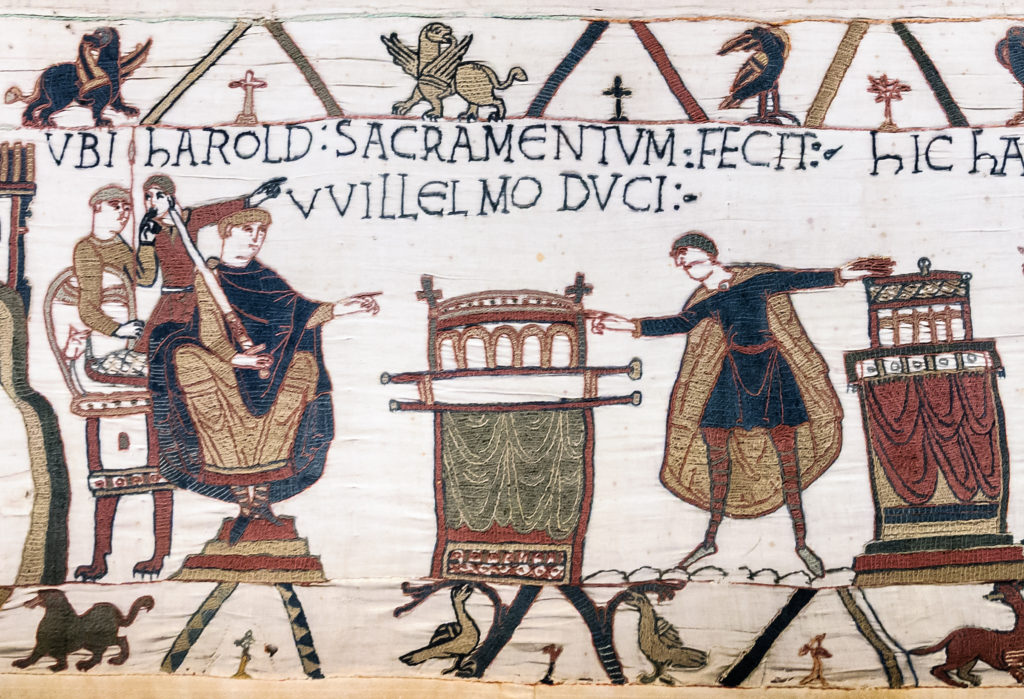Last updated on January 27th, 2023 at 04:17 am
The Middle Ages must be the most misunderstood period of human history. Often, people view it as a period during which people lived in poverty and society largely stood still, waiting for the Renaissance to come and pull them out of squalor. This wasn’t the case.
There were distinct periods in medieval Europe. First came a Dark Age following the collapse of the Roman Empire, then a gradual re-emergence of stable societies, and then the flourishing High Middle Ages from 1000 AD onwards when Europe developed its own significant culture.
Similarly, the stereotypical idea of life being endless struggle and toil for the ordinary people of Europe at this time is somewhat inaccurate. So what was life like for a medieval peasant?

What Was a Peasant?
The word ‘peasant’ comes from the French word paisant, a person from the countryside. This period was when most of Europe’s people lived in rural areas, and as many as 80% were peasants.
Above these was the feudal class of lords and knights who owned the manors on which the ordinary people lived. The peasants held a small amount of land in vast ‘open fields’ from the manorial lord and provided the lord with a proportion of his harvest and a certain number of days of free labor every year.
What Were Peasant Homes Like?
A typical peasant house was hardly a palace, but it was not as backward a place as some stereotypical views of the Middle Ages would suggest. Instead, the house would contain several rooms built around a central hearth or fireplace, used for cooking daily and served to heat the abode during the cold winters.
Far from being mere huts, these basic homes often had features familiar to modern people, such as doors and windows, while the kitchen would have had the basic utensils needed for cooking, such as a kettle and pots, pans, and cutlery.
What Work Did Peasants Do?
The day’s activities were seasonal and involved planting crops, maintaining them, or harvesting them, depending on the time of year.
Peasants cared for livestock year-round and owed a certain number of days of labor in the year to the lord or knight of the manor.
Housework was demanding in a time when they had to fetch water from rivers or wells, and there were no modern appliances to clean or cook with. Yet winter was a time of rest after the harvest when there was little to do.
The most significant meal of the average day came at midday, with a light supper in the evening and tiny bits of sustenance intermittently throughout the day.
There was little by way of table manners in the modern sense, which were a development of the Renaissance when Italian fashion around etiquette began to disseminate around Europe from the courts of the Italian city-states.
What Was a Peasants Diet Like?
While the upper class of medieval Europe consumed large amounts of meat, the average peasant’s diet was heavily based on cereals and grains.
Notably, they ate a lot of unleavened bread, though if one lived near the coast, seafood, which was considered a poor man’s food then, was plentiful.
In addition, they consumed large quantities of fruit, vegetables, beer, and wine.
Medieval Religion
Daily life was volatile. Diseases could and did strike with appalling consequences. There was little the average community of peasants could do to combat such onsets of plague and other conditions or even understand what was occurring.
Unsurprisingly, people turned to the heavens for solace in such a temperamental world. The church was ubiquitous across medieval Europe, and most people adhered to its strictures unquestioningly.
The year was punctuated with religious festivals, which still possessed many quasi-Pagan dimensions, while the Cult of the Saints was profoundly important to medieval people.
Peasant Like Wasn’t All That Bad
Life was not dour in all respects. In many ways, daily life in medieval Europe was far less stressful for the average peasant than it is for the contemporary wage worker, who is tied day in and day out to a schedule of work and endless responsibilities.
The average peasant had to ensure the agricultural work was done and could do what he wished. While it was a tough life during the harvest season, the medieval peasant had a lot of downtimes once they sewed their crops and the winter had arrived. Moreover, this was not a lawless age.
Manorial courts existed that regulated life in the countryside and ensured that people did not take advantage of each other.
Indeed, as the literature and artwork of the High and Late Middle Ages indicate, peasant communities in rural Europe at the time possessed a strong sense of community of a kind entirely lacking in most of the modern world.
Undoubtedly, this life was one lived hand to mouth and where the vagaries of life could be difficult.
A harvest failure or an onset of disease could have terrible consequences, such as in the fourteenth century when the Great Famine of the 1310s was followed by the Black Death of the 1340s, which cumulatively killed over half of the continent’s people.
However, some of the rudiments of modern life were discernible and became more common. When increased scientific information and economic productivity arrived from the sixteenth century onwards, they began to usher in the contemporary world, bringing to an end the peasant’s way of life, which predominated across Europe for several centuries.
Sources
Frances Gies and Joseph Gies, Life in a Medieval Village (New York, 1989).
Robert Fossier, The Axe and the Oath: Ordinary Life in the Middle Ages (Princeton, 2010).
Constance B. Bouchard, ‘Community: Society and the Church in Medieval France’, in French Historical Studies, Vol. 17, No. 4 (Autumn, 1992), pp. 1035–1047.
Christopher Dyer, ‘The English Medieval Village Community and its Decline’, in Journal of British Studies, Vol. 33, No. 4 (October, 1994), pp. 407–429.

